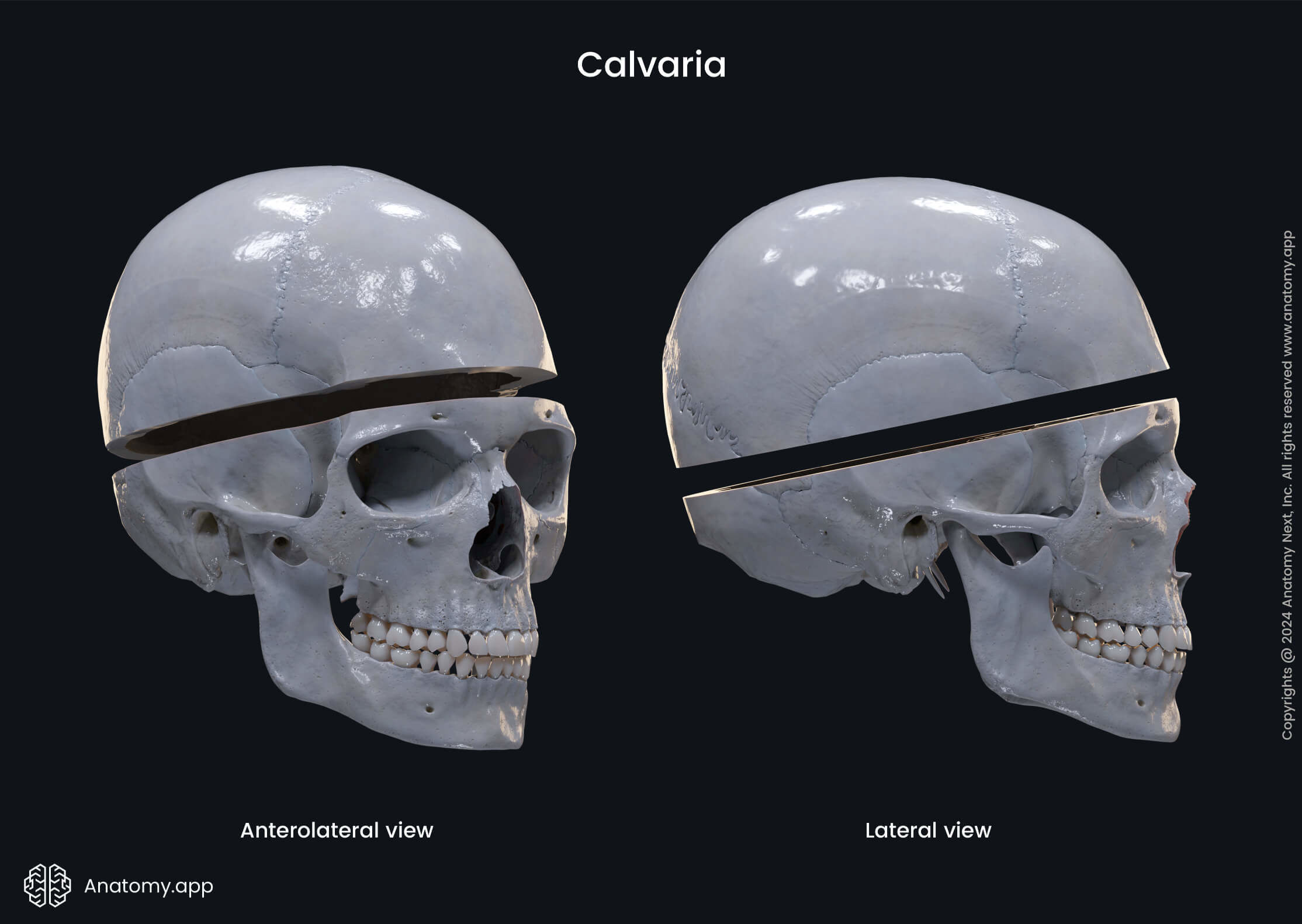Cranial base and calvaria
The skull can be divided into two parts - cranial base and calvaria. The cranial base refers to the floor of the cranial cavity and the inferior part of the viscerocranium, while the calvaria is the upper portion of the neurocranium that covers the cranial cavity. The calvaria is robust, and it surrounds and protects the brain. In contrast, the cranial base is more delicate and composed mainly of thin-walled bones.
Cranial base
The cranial base, or the skull base, is the most inferior part of the skull that forms the floor of the cranial cavity. It appears highly irregular from both the external and internal aspects.
The cranial base represents the interface between the cranial cavity and intracranial compartment and the face and facial structures. The skull base is also a passageway for numerous major neural and vascular structures that transverse it through paired and unpaired openings.
The cranial base can be inspected from two sides and is, therefore, subdivided into two portions:
- Internal cranial base - the inner aspect of the skull base;
- External cranial base - the outside of the cranial base.
Note: The cranial base does not include the mandible.
Calvaria
Opposite the cranial base, the calvaria is the uppermost part of the skull. It covers the cranial cavity and serves as a roof, protecting the brain from above. It is formed by the squamous part of the frontal bone, parietal bones, squamous part of the temporal bone, and squamous part of the occipital bone. The calvaria is also known as the skullcap, cranial vault, or skull vault.

Cranial cavity
The space within the skull is known as the cranial cavity or the intracranial space. The cranial cavity houses the brain and meninges, as well as the intracranial portions of the cranial nerves. It also contains vessels supplying the brain with arterial blood (arteries) and vessels collecting venous blood from the brain (veins and venous sinuses).